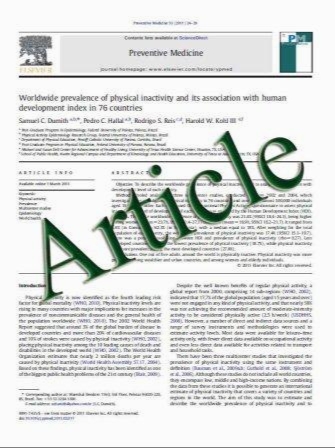The Modified Five-Point Test: normative data for a sample of Italian healthy adults aged 16–60
- نوع فایل : کتاب
- زبان : انگلیسی
- مؤلف : Raffaella Cattelani • Flora Dal Sasso • Delfina Corsini • Lucio Posteraro
- چاپ و سال / کشور: 2011
Description
The Five-Point Test is one of the various measures of figural fluency functions that have been developed as nonverbal analogues to word fluency tasks, and used in neuropsychological assessment to evaluate the ability to initiate and sustain mental productivity, and to self-monitor and regulate responding in the visual–spatial domain. The aim of the current study was to collect normative data for a version of the Five-Point Test (M-FPT) administered to a sample of Italian healthy adults aged 16–60 (n = 332). Performance on the M-FPT was scored by computing the cumulative number of unique designs (UDs) performed on a 3-min administration time. Two supplemental scores were also computed: (a) the cumulative strategies (CSs) consisting with the number of UDs incorporated into enumerative or rotational strategies; (b) the error index (ErrI), consisting with the percentage between the number of perseverative or rule-breaking errors and the number of designs overall. Multiple regression analyses revealed a significant effect of age and education, but not gender, for both UDs and CSs. Equivalent scores and cut-off scores were then determined for UDs and CSs. Descriptive statistical analyses and cut-off scores were reported for ErrI. The availability of normative data for the M-FPT will be valuable in clinical settings for assessing of executive dysfunctions on the visual-spatial subdomain of subjects with brain injury. However, in order to increase the usefulness of the test, the upper limits of the age range of the normative sample should be widened. Moreover, further analyses should be required for determining the inter-rater and test–retest reliability for M-FPT performances, and providing evidence of the sensitivity of this measure to brain disturbances generally and to frontal lobe dysfunction specifically.
Neurol Sci (2011) 32:595–601 DOI 10.1007/s10072-011-0489-4 Received: 6 April 2010 / Accepted: 28 January 2011 / Published online: 16 February 2011


